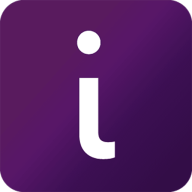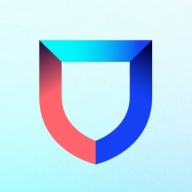


Acunetix and Lacework FortiCNAPP both compete in the cybersecurity sector. Acunetix has an edge in application security testing due to its ease of use and speed, while Lacework FortiCNAPP provides superior cloud security and compliance management.
Features: Acunetix provides an Interactive Application Security Testing module that delivers detailed findings and is complemented by its fast scheduling of tests and vulnerability reports. It is user-friendly and easily scalable across multiple environments. Lacework FortiCNAPP excels in anomaly detection and compliance management across different security frameworks, offering cloud security management and continuous monitoring capabilities that provide real-time security insights.
Room for Improvement: Acunetix could improve its IAS capabilities and reduce false positive rates, along with expanding into mobile app security. Adjustments in licensing flexibility and pricing are also needed. Lacework FortiCNAPP should enhance its integration with third-party SIEMs and provide better data visibility, as well as gain certain FedRAMP authorizations to meet government environment requirements.
Ease of Deployment and Customer Service: Acunetix is versatile, available for deployment in On-premises, Private, Public, and Hybrid Cloud environments. Users generally find its 24-hour support a notable advantage, despite occasional delays. Lacework FortiCNAPP primarily focuses on Public and Private Cloud environments, offering responsive support but sometimes experiencing delays, relying on a ticket-based system.
Pricing and ROI: Acunetix's pricing has risen, making it competitive with market rates but less economical than initially, though it still offers significant ROI through vulnerability identification. Its complex licensing requires careful cost-to-value analysis. Lacework FortiCNAPP presents a high-cost barrier influenced by environment size but has shown pricing flexibility with early adopters, offering ROI through enhanced security postures.



Zafran Security integrates with existing security tools to identify and mitigate vulnerabilities effectively, proving that most critical vulnerabilities are not exploitable, optimizing threat management.
Zafran Security introduces an innovative operating model for managing security threats and vulnerabilities. By leveraging the threat exposure management platform, it pinpoints and prioritizes exploitable vulnerabilities, reducing risk through immediate remediation. This platform enhances your hybrid cloud security by normalizing vulnerability signals and integrating specific IT context data, such as CVE runtime presence and internet asset reachability, into its analysis. No longer reliant on patch windows, Zafran Security allows you to manage risks actively.
What are the key features of Zafran Security?
What benefits can users expect from Zafran Security?
In industries where security is paramount, such as finance and healthcare, Zafran Security provides invaluable protection by ensuring that only exploitable vulnerabilities are addressed. It allows entities to maintain robust security measures while allocating resources efficiently, fitting seamlessly into existing security strategies.
Acunetix Web Vulnerability Scanner is an automated web application security testing tool that audits your web applications by checking for vulnerabilities like SQL Injection, Cross site scripting, and other exploitable vulnerabilities.
Lacework FortiCNAPP provides robust cloud security, combining vulnerability management and multi-cloud insight with user-friendly controls, machine learning detection, and compliance support.
Lacework FortiCNAPP specializes in cloud security by merging machine learning anomaly detection with agent-based vulnerability management to offer detailed alerts and compliance reports. Its comprehensive approach allows continuous monitoring across AWS and Kubernetes, providing insights from an attacker's perspective. The platform offers automation and seamless Slack integration, facilitating collaborative and efficient cloud security management. Users value its ability to handle multi-cloud environments and scan IAC scripts, configurations, and compute nodes across AWS and GCP.
What are the key features?Organizations across sectors leverage Lacework FortiCNAPP for cloud security, focusing on compliance, security posture, and vulnerability management. It is widely used for monitoring AWS and Kubernetes environments, scanning IAC scripts, configurations, and securing compute nodes. It supports multi-cloud security posture management and log ingestion, enabling companies to maintain strong cloud infrastructures without dedicated security layers.
We monitor all Vulnerability Management reviews to prevent fraudulent reviews and keep review quality high. We do not post reviews by company employees or direct competitors. We validate each review for authenticity via cross-reference with LinkedIn, and personal follow-up with the reviewer when necessary.